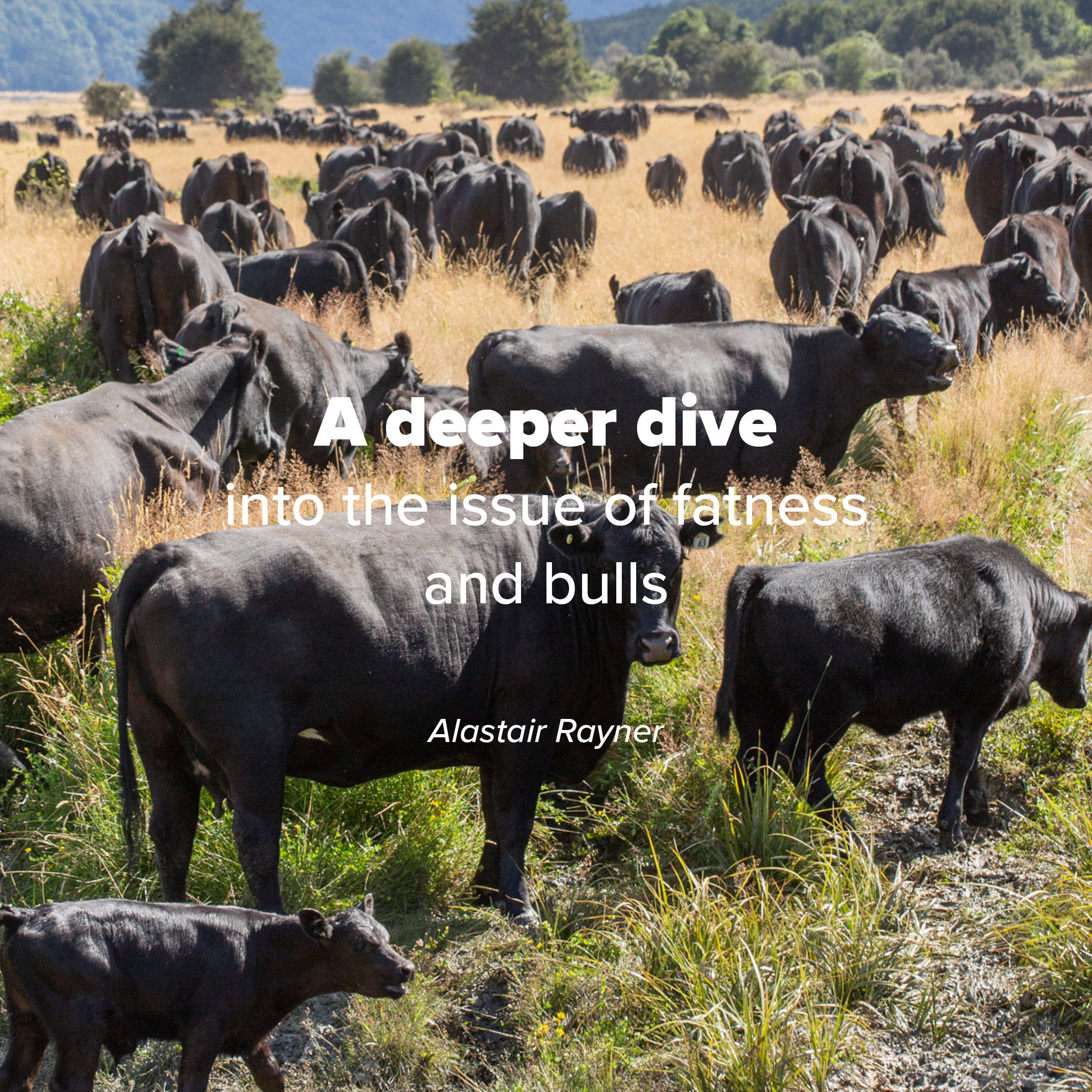Beef Central, 25/07/2023

FATNESS, or the ability to finish, is often a focal point for many producers in their selection decisions.
The role of fatness in a beef herd is often very complex. Fatness has a significant role to play in the management of the breeding herd and in the ability of sale animals to meet market specifications.
The deposition of fat in an animal is relatively slow in the early stages of an animal’s life. Once the individual achieves approximately half its physiological maturity, fat deposition starts to increase.
As an animal matures, there can be a significant increase in fatness, particularly when the nutrition on offer exceeds the animal’s capacity for bone and muscle growth.
Research in the 1970s demonstrated that in the early phases of an animal’s growth, when feeding high quality rations, around 50-60 percent of the net energy intake is used for bone and muscle growth, with the remainder being deposited as fat.
In the later stages of growth, this use of energy changes dramatically with 85-90pc of the energy intake being deposited as fatness.
Fatness is also impacted by genetics. There have been numerous research projects which have established the level of heritability of fatness, with most published results indicating fatness is moderately heritable at around 30pc. This means that selection of sires can strongly impact the levels of fatness in the next generation.
The challenge with fatness is that it isn’t as straightforward as selecting for the trait and then managing the environment (largely through nutrition) to achieve the desired level of fatness.
Multiple factors, including genetics and variations in nutrition result in fat deposition varying significantly among animals.

Research published by Professor Wayne Pitchford from the University of Adelaide demonstrated that about three quarters of the genetic variation in adult body condition score (BCS) is independent of the genetic variation observed in the measurement of younger animals.
In practical terms producers need to firstly consider what role fatness plays in their herds.
Many producers aim to maintain a level of fatness in order to ensure their females meet a benchmark for joining and calving, as well as to meet expectations for market specifications in sale animals. These considerations often are forefront of a selection process.
This can be confused further when producers start to assess bulls in sale offerings and attempt to make an assumption of a bull’s physical appearance and level of fatness and his influence on their herd.
An earlier genetics article on Beef Central highlighted the difference between the physical appearance of a bull and his actual genetic potential. In traits such as fatness, the measurements of the bull provided in the supplementary sheets are more a result of the environment than genetics.
A fat bull at sale day does not means his progeny will be fat or fatter than the current generation at home.
The level of body condition bulls display is more appropriately considered in regard to his actual ability to commence work as a fertile and free moving bull.
The QDPI publication “Bull Selection – Buying Better Bulls” notes that “Over fat bulls do no work as well as bulls in forward store or working order. Obese bulls tend to have lower libido or desire to serve cows, arthritic conditions, and deteriorating semen quality.”
Semen quality impact
Semen quality is a significant issue in bulls with higher levels of fatness. Several key research projects have published data that demonstrates bulls which have been fed high energy diets from weaning to 15 months of age had greater levels of fatness deposited in their scrotums and had lower levels of daily sperm production than bulls which were grown on medium energy diets.
This reflects work published in Canada which showed bulls with 4mm of fat cover produced 60pc more sperm, and at higher semen quality than was produced by bulls with 10mm of fatness.
With this in mind, producers making selection decisions on bulls should firstly take note of the fatness scans on bulls in catalogues, and consider if the bulls that they have an interest in, are capable of achieving the mating goals that are in place within a program.
It may be that the fatter bull’s potential poses a greater risk of failing to meet conception targets in their first year of use compared to a bull with lower fat scans.
In regard to the ability of the bull to shape the future levels of fatness within a herd, the raw scans are less helpful. If producers are clear on the levels of fatness they need in their herd for breeding or marketing outcomes, the genetic information provided by the bull’s EBVs are more useful. This information reflects the genetic impact a bull can have.
Finally producers need to consider how the genetics of their cow herd, combined with the environmental conditions of their program are likely to impact future performance.
It is worth remembering that selecting a bull with above average fatness will result in a move towards increased fatness in his progeny, regardless of his own condition on sale day. Similarly selecting for below average can help reduce the levels of fatness his progeny should display.

Alastair Rayner is the Principal of RaynerAg, an agricultural advisory service based in NSW. RaynerAg is affiliated with BJA Stock & Station Agents. He regularly lists and sell cattle for clients as well attending bull sales to support client purchases. Alastair provides pre-sale selections and classifications for seedstock producers in NSW, Qld and Victoria. He can be contacted here or through his website www.raynerag.com.au


